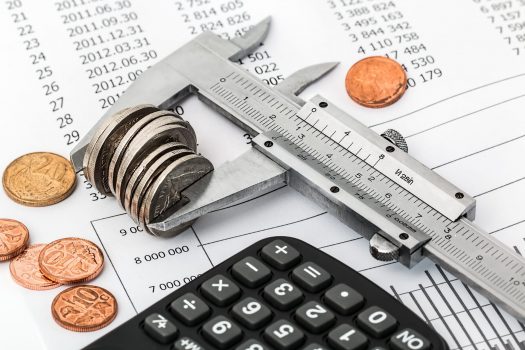By Barbara O’Neill, Ph.D., CFP®, Rutgers Cooperative Extension, [email protected]
This post describes small steps that people can take to create a margin of safety (a.k.a., a buffer or a cushion) for their personal finances. According to author and productivity expert, James Clear, the term “margin of safety” is an engineering concept used to describe the ability of a system to withstand loads that are greater than expected.
For example, imagine that someone is building a bridge and the maximum weight for a commercial truck carrying a full load is around 80,000 pounds. An engineer on the project would build a bridge that can safely carry vehicles weighing far more than the maximum weight, just to be on the safe side.
A margin of safety is crucial, not only in the world of bridges and construction, but also in many areas of everyday life. Having a “cushion” helps people deal with unforeseen problems and deal with life’s inevitable challenges. An example is shoveling a wide swath of snow from your driveway in case there is even more snow coming from another snowstorm before the first round of snow can melt. The way that people schedule their time is another example of the “margin of safety” concept. For example, if it takes 30 minutes on a day with “normal” traffic to get to work, you might leave 45 minutes ahead of time “just in case.”
The “margin of safety” concept can also be applied to ways that people handle their personal finances. Below are five strategies to increase your financial margin of safety:
Live Below Your Means
People who spend less than they earn have a cash cushion to weather the unexpected. Not only do they have positive cash flow (income greater than expenses), but they likely have accumulated some savings by living frugally and setting aside some of their extra cash. Those who are able to live on, say, 60% to 80% of their income can handle more financial stress than others who cannot.
Build Adequate Emergency Reserves
An adequate emergency fund provides a margin of safety against unexpected events such as accidents and unemployment. Financial experts recommend setting aside three to six months expenses (e.g. $6,000 to $12,000 with monthly expenses of $2,000). Many households do not come anywhere near this amount, however, so today is a good day to start building emergency reserves.
Any savings is better than none. Clear notes, “The bigger the buffer, the more chaos you can handle.”
Pay Off Debt
Debt is an albatross around personal finances. The sooner it is paid off, the more “wiggle room” people have to handle life events. Aim to pay off outstanding credit card debt in a year or less. The PowerPay debt reduction program from Utah State University Extension (see https://powerpay.org/) can create an accelerated debt repayment plan. Also, aim to make a final mortgage payment before retirement.
Purchase Adequate Insurance
Sometimes negative life events are so costly that, even with savings, people cannot afford to pay for them out of pocket. Examples include a cancer diagnosis or the inability to work for two years due to disability from a severe auto accident. This is where insurance comes in because the risk of loss is transferred to a third party (insurance company) in exchange for payment of a premium.
Arrange Contingency Options
Examples of planning for financial contingencies include having a line of credit for small business owners and freelancers to bridge gaps in their irregular cash flow, reverse mortgages as a financial planning tool (e.g., to delay the receipt of Social Security benefits so they will be larger), and preparing current estate planning documents (e.g., a will and advanced directive documents such as living will and durable power of attorney for health care).
Want to take small steps to improve your personal finances? Take action today to build your financial margin of safety. Every small step that you take to prepare for life’s inevitable “bumps in the road” makes a difference. For examples of factors that promote resilience in times of financial stress, take this quiz.
stevepb/Pixabay.com, CC0













